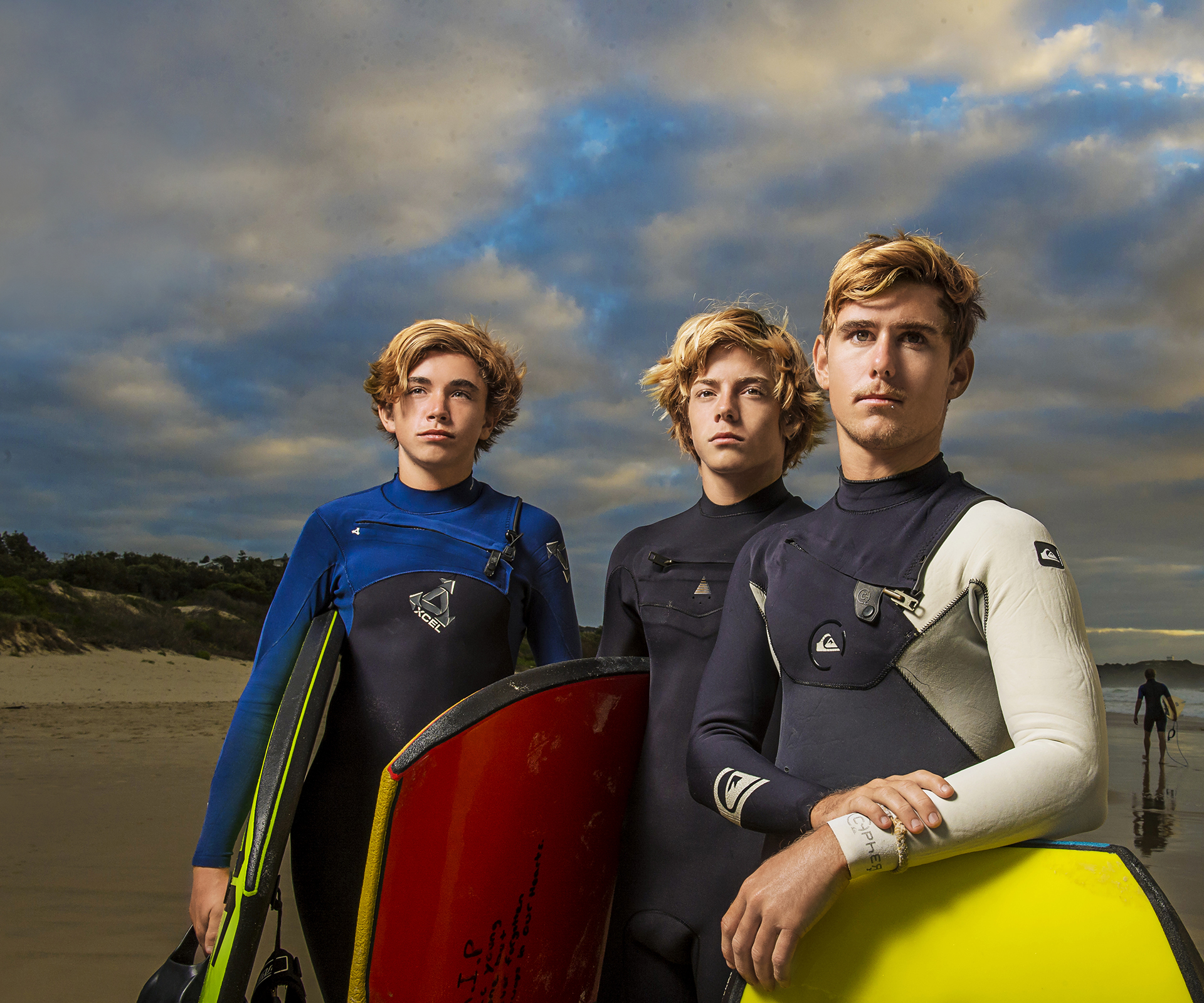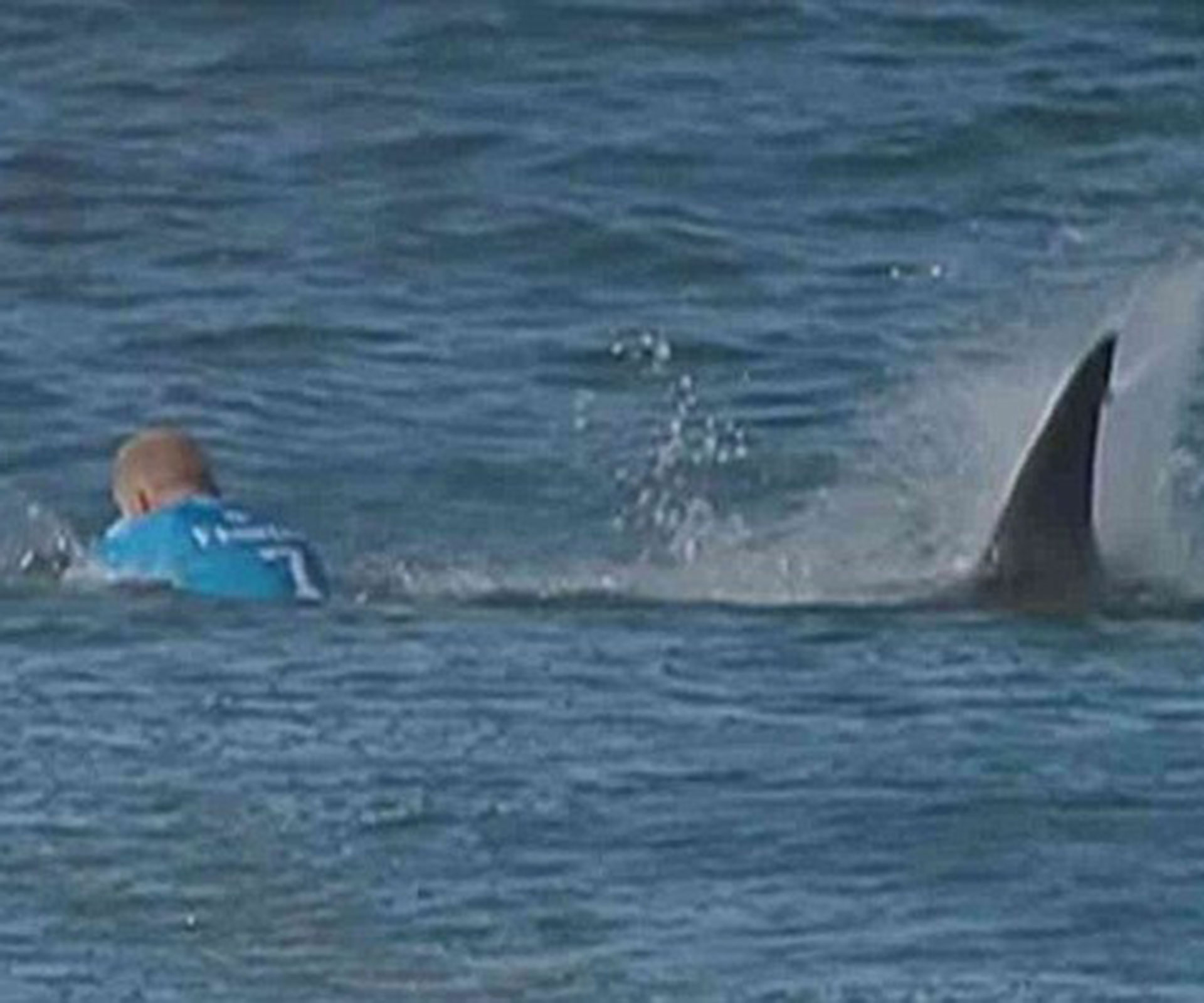Undoubtedly biggest story making waves around the world today is Australian surfing champion Mick Fanning’s incredible stoush with a monster shark – a battle he unbelievably came away from physically unscathed.
Mick was surfing in the final of a world tour event in Jefferys Bay, South Africa when the shark swam toward him, forcing the champion to fight for his life. Horrified spectators gasped as a fin that seemed taller than Mick himself sliced through the water toward him.
The two-time world champion – said he “saw fins” and was “waiting for the teeth” to come toward him when he started pounding the shark with his fist.
Fellow Australian surfer Julian Wilson, who was also in the water, became an instant hero when he turned his board toward Mick and immediately began paddling toward his stricken mate.
Wilson said: “It was pretty spooky. I saw the whole thing pop up behind him. It came up and he was wrestling it. I saw him get knocked off his board and then a little wave popped up and I thought ‘he’s gone, he’s gone under’. I felt like I couldn’t get there quick enough,” Wilson said. “I’m just happy he’s alive.”
Mick thanked Wilson for his automatic reaction to come help: “What a legend, coming after me.”
Earlier today the Weekly’s Caroline Overington wrote: “Julian’s first instinct – to paddle frantically toward the shark to try to save Mick Fanning’s life – qualifies him as true Australian hero.”
While Julian is more than deserving of hero status, he would likely be the first admit that as he swam towards his mate – and towards the giant beast that threatened his life – his actions were instinctive. Every one of Julian’s strokes would have been driven by the code that surfers live, and sometimes die by. A promise that says if you see a mate who needs help in the water you go and get them, no matter what.
That unspoken vow has been tested time and time again whenever you hear of an ugly encounter between surfer and shark – fellow surfers are often the first ones on the scene dragging their comrades to safety.
And while we are delighted to see that Mick is physically okay his encounter and Wilson’s reaction that reminds us of some young Aussie heroes we met last year.
When a tiger shark rose from the ocean depths to attack surfer Zac Young in November 2013, his three companions fought their own fears, a swirling sea and Zac’s horrific injuries to bring him back to shore.
Michael Sheather spoke to these three extraordinary young men about the day they lost their best friend. Read the FULL STORY BELOW.
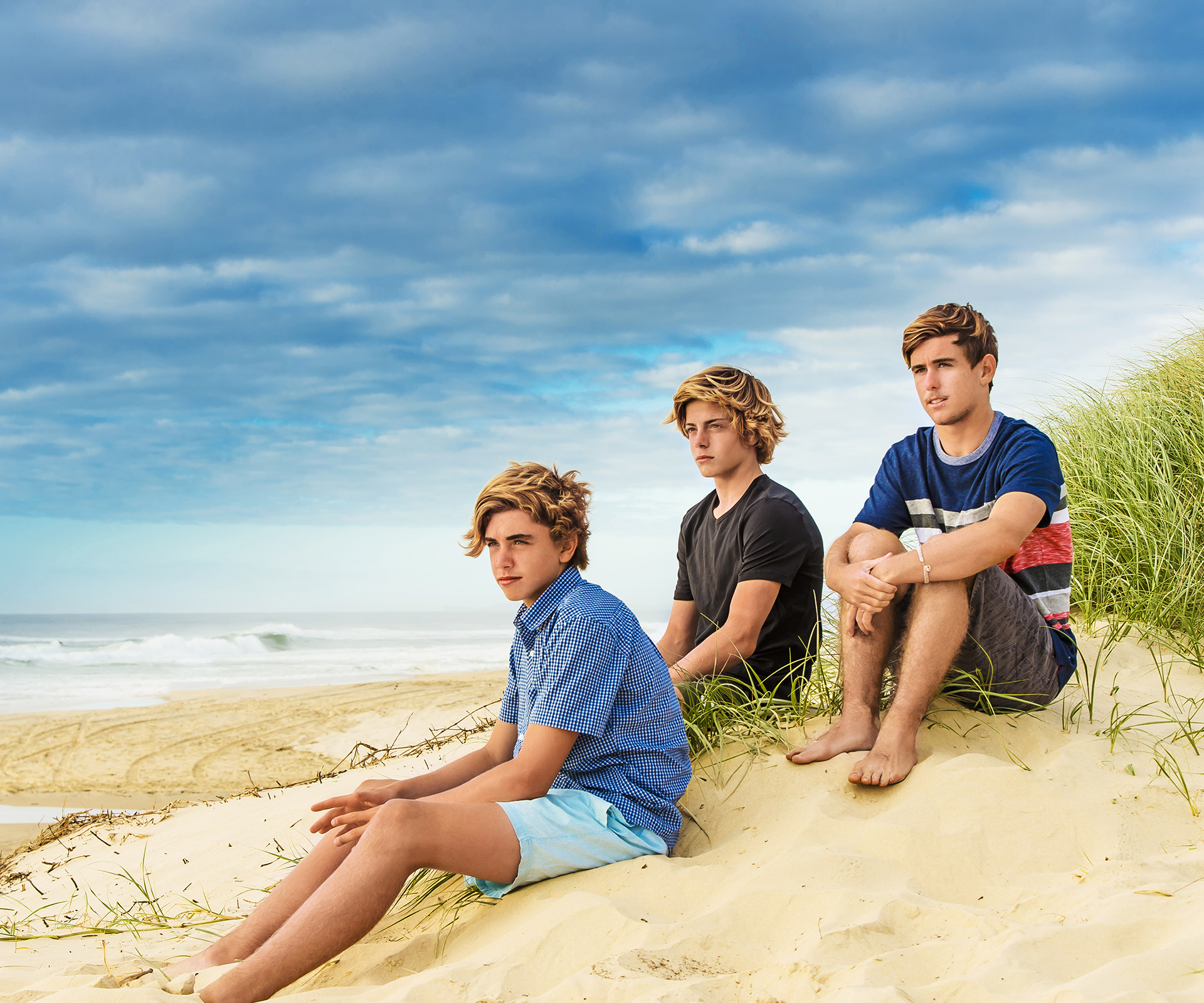
Kurt Gillan, Linsay Issac and Shayden Shrader tell of how they fought to save a mate.
The wind was up. So were the waves. The water was warm, even for late November. Lindsay Issac kept his hands on the front edge of his bodyboard, steadying himself as his body bobbed up and down in time with the ocean’s surging rhythm.
Lindsay was furthest out in the water, about 20 metres from his three mates – Zac Young Young, Kurt Gillan and Shayden Shrader – watching as they joked and splashed and waited for the next wave to rise and break on the reef ahead of them.
Then, just two metres ahead of him, Lindsay saw a fish skip out of the water. It was big, about 50 centimeters, a blue and silver tuna. Then another fish broke the surface and then seven or eight more, like a flight of birds scared into flight.
“Zac was closest to me,” recalls Lindsay, 13, the youngest of the group. “I paddled over. I said: ‘Did you see those fish?’ He gave me a big grin and said, ‘It’s just fish, nothing to worry about.’
“But I was spooked. ‘Yeah, but there could be sharks around…’ Zac stopped paddling and he said: ‘You can’t live in fear. You never gain anything in that’. Somehow, that made me feel a whole lot better.”
Lindsay’s instincts were far sharper than he knew. Bait fish hitting the surface, like the tuna school he’d just seen, are sometimes the ocean’s only signal that predators are lurking beneath the surface.
But Zac Young, at 19 the oldest of the group, was also the most experienced in the surf, a competitive bodyboarder who hungered after a good swell and the thrill of mastering a big wave.
It was Zac who’d driven the four companions to the beach that day, a two and a half hour road trip from their home in Port Macquarie north to Campbell’s Beach, up the coast from Coffs Harbor, and a popular but isolated surfing spot known as The Well.
Zac was right, Lindsay decided. During all the years they’d surfed together, they’d seen plenty of fish but never any sharks. “There was no reason to think there was anything bigger down there,” says Lindsay.
The Well, a spot jealously guarded by local surfers, sits about 150 metres off shore, just beyond a group of large rocks that break the water’s surface.
“It’s a big wave if the conditions are right,” explains Kurt Gillan, 18, Zac Young’s friend for the past nine years. “Zac and I had been there before and it was probably Zac’s favourite wave anywhere. It’s called The Well because there is a reef on one side and then a drop off to a deep channel and then another drop off to the ocean floor. It’s literally like falling into a well.”
When they arrived at six am on November 30 last year, conditions weren’t perfect. The wind was light but predicted to pick up during the day. And the tide was high. For the best waves on The Well, the tide needs to be at its lowest point.
Zac and his mates waited in the car till 12pm when they noticed the waves begin to get bigger. “Let’s go – woo hoo,” Zac called, racing to grab his board and be the first into the water.
They’d been in the water about two and half hours when Lindsay spotted the fish. “Zac knew I was freaked out so he called us all together into a little group,” says Lindsay. “He was a very religious guy and he said a prayer for all of us, asking that we’d be safe and that nothing would happen to us.”
But 10 minutes later, the water, which had been so clear that the boys could see the reef below them, suddenly turned dark and murky. Grey clouds swept overhead, transforming the water from a clear blue to a deep viscid green.
“I was in the channel, behind the wave break,“ recalls Shayden, 14. “I caught a wave and then Zac caught one after me. We started to paddle back out together. I stopped and was talking to Kurt and Zac kept paddling up to the reef. He was about 10 metres away. We could hear him talking about the wave he’d just caught and waving at us.”
Then Zac stopped talking. Everyone stopped and just for a few seconds there was nothing but silence.
“I heard Zac yelling and I looked over at him and I could see something in the water next to him,” says Lindsay, who was closest to the shore. “He was yelling and swinging his arms, trying to beat it off, trying to get it off him.”
And it was then that the boys’ world began to spin wildly out of control. All three agree that events became a blur, time slowed; a nightmare come to life.
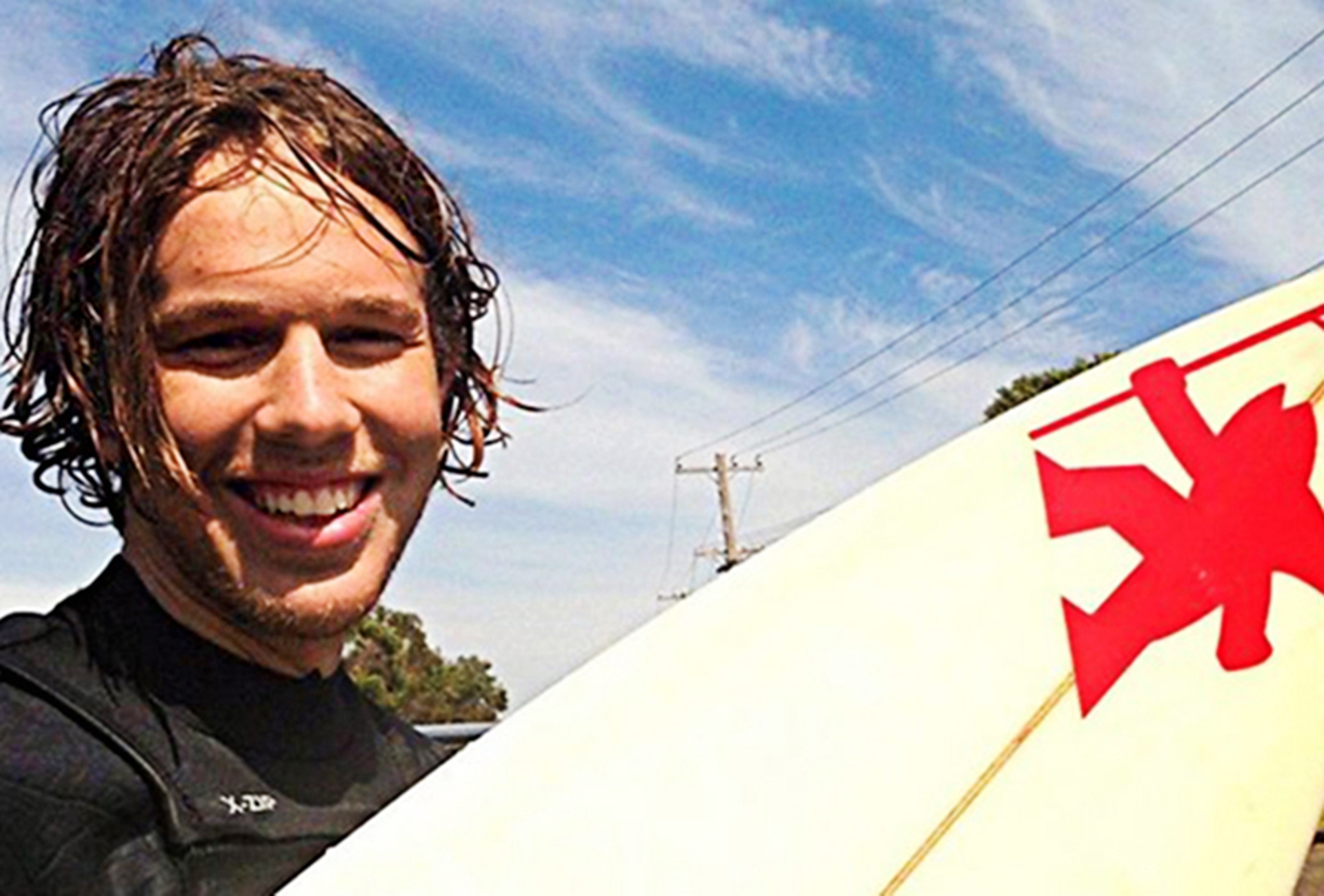
Zac Young.
Kurt was paddling toward Zac, obviously in serious trouble. “”I looked up and saw him punching the water and then I could see a massive pool of blood spreading away from him in the water,” says Kurt.
“Then I saw the shark’s fin. It started thrashing about up out of the water and it turned on its side – I could see the whole length of it’s body as it turned – and then it let go. Just then, another wave came in and Zac managed to catch it, pushing him closer to us…”
Kurt watched in horror as he realised Zac was riding a wave stained with his own blood. “I watched as he rose on the wave and the whole wash was just red, red with Zac’s blood,” says Kurt, tears brimming.
Lindsay, still struggling to come to grips with what was happening, saw Zac in the wash a few metres away. “Shayden was on the other side and I could see Kurt coming in, too, but I couldn’t see the shark. Then Zac jumped off his board and on to Shayden’s back. He started to paddle a bit but he stopped and sort slipped off. I think he was in shock. We started to drag him in.”
When he was on Shayden’s back, Zac started to panic, says Shayden. “He was saying, ‘what’ll I do bro, what’ll I do?’” Shayden says. “And there was so much blood. I was just trying to stay calm. I tried to reassure him. He told me that he loved us, each one of us. We were like brothers, he said. I said, ‘We’ll do our best to get you in’.”
Yet they all knew the dangers that still lurked below the water’s surface. They were still hundreds of metres from the shore; they had no idea if the shark was still stalking them, following the scent of Zac’s blood in the water or if that blood had attracted other sharks.
“I was aware the shark was there, we all did,” says Lindsay. We knew it was underneath us somewhere and that it could have done anything at any time, but we just had to think about Zac. I just put Zac in the front of my mind and kept him there. He’d already been attacked so we had to get him in before we thought about ourselves. That’s just what we had to do.”
At the same time, they also knew that getting their friend to shore was a far bigger task than they imagined. The tide was at its lowest point, which meant that between the reef and shore – about 150-200 metres – it was dead water. If waves were breaking then they might have caught one to help them move Zac to shore, but as it was, they had rely on their own muscle power. And Zac’s strength was fading with each passing second.
“We didn’t need to say anything to each other,” says Kurt. “Zac’s injuries were pretty bad, worse than anything I have ever seen before. His right leg below the knee was in shreds, just rags of flesh hanging off. It looked as if a bomb had exploded next to it.
“The left leg wasn’t as bad, but still had deep lacerations where the shark had bitten him but let go. From the massive amount of blood in the water we knew we didn’t have much time. We had to get him out of the water and to help. We all knew that without us, Zac was going to the bottom, and we knew what was down there.”
Shayden and Lindsay were struggling to hold Zac up out of the water. It appeared he was going into shock, a common result of massive blood loss.
“Zac started to pray,” says Lindsay. “That’s when I got really scared. I kept thinking about the words Zac said to me when I saw the fish; that fear doesn’t gain anything. I just held on to his words and kept going.”
Kurt could see the fear in his young friend’s eyes. “I just said, “Lindsay, go. Shayden, you too. Get out of the water and go get help. I’ll take Zac.”
He grabbed Zac with one arm holding him on top of his body board like a package on a plank, as he struck out for shore. “I was hitting it as hard as I could to get in, but it seemed as though we were going nowhere fast,” recalls Kurt. “And there was a massive trail of blood spreading out behind us.
Lindsay was now close to shore, but Shayden, the fastest paddler of the three, was even closer. “I yelled at Shayden, “Hurry, hurry, hurry” as Shayden got up onto the sand and went off down the beach,” says Lindsay.
As Shayden was coming out of the water, he cast his eyes up and down the beach. Off in the distance he could see the lifeguard flags and a small crowd of people – but that was almost at the other end of the beach, more than a kilometre away. Between there and him was only one man walking a dog.
“I ran up to him, probably about 200 metres. I was waving my arms and yelling help. When I reached him, I said ‘Excuse me, do you have a phone or anything.? My mate’s just been attacked by a shark. Do you have any way you can help me?’
“ He said, “No, I can’t help you. I’m sorry” He started to walk off. I just didn’t know what to say to him. Lindsay came out of the water and saw what happened and he started yelling at this guy,
‘Please go and get some help, find someone with a mobile phone, tell someone what’s happened…’”
As the man started running back up the beach, Lindsay sprinted across the sand and into the bush. He knew there was a road; if he could get to it he might be able to flag down a car.
Shayden ran back down the beach. He saw Zac struggling with Zac, about 50 meters out. Despite his own fears about the shark, he put his fins back on and waded back into the water.
But a strong southern swell was now pushing the current across the beach. As Kurt tried to drag Zac towards shore, he was pushed down the beach not towards it.
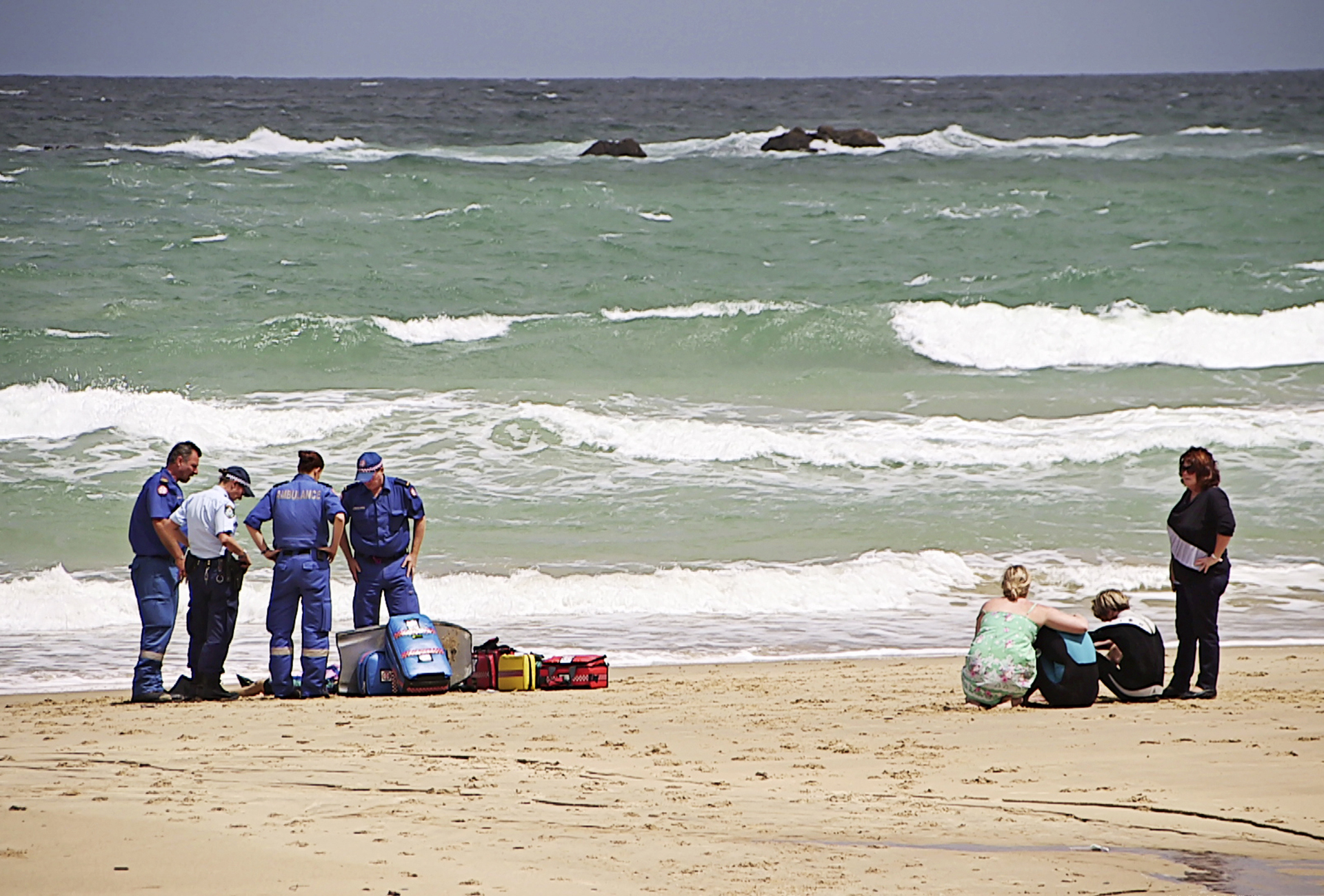
The boys are comforted on the sand after helping Zac to the shore and commencing CPR.
A few minutes later, Shayden reached Kurt. They both took hold of him and with their fins churning made a last almost superhuman effort to break through the current.
This time, with both of them paddling furiously, they hit the shallower water where they could stand. Kurt ripped off his fins and with Shayden’s help dragged Zac to shore and up the sand. Zac was conscious but barely. Coming ashore had taken 15 vital, gut-wrenching minutes.
“It was just me and Kurt on the beach trying to help him as much as could,” recalls Shayden, his eyes suddenly rimmed red. “He was talking, but we couldn’t make out the words. Kurt was pumping his chest doing CPR. In the distance, I could see people coming up the beach.”
Lindsay had managed to find the road and flag down a passing motorist. “It was pure luck,” says Lindsay. “The lady had a phone and we called for an ambulance. She had some blankets in the car. I grabbed them took off back to find Kurt and Shayden.”
Kurt checked Zac’s pulse. It was steady but his eyes had rolled back in his head. Foam still bubbled from his mouth. “We wrapped the blankets around him to help stop the bleeding but he’d already lost so much blood,” says Kurt.
The wait for help seemed interminable even though it was probably only about 20 minutes, though it might have been sooner if the Ambulance had been able to find the obscure track into the beach.
“Kurt kept working on Zac’s chest and he was moaning, but it seemed to take forever,” says Shayden.
Yet even then, they were still sure that Zac would be all right. “We all had faith that he’d be fine,” says Shayden. “You see people losing their legs, hear of people having a leg taken by a shark and they survive. And being such a good person we just thought it can’t happen to Zac. As soon as we got to shore and there was nothing else we could do, I still thought he’s going to survive.
The ambulance will be here soon. We’re going to see him again.”
When they arrived, ambulance and police officers kept Zac where the boys had dragged him above the waterline, and propped up their equipment and a body board to shield him while they worked.
But nothing could hide the brutal shock Kurt, Lindsay and Lindsay were about to receive. “We were all sitting on the beach about five metres from Zac,” recalls Kurt. We were all saying this is going to be some hell of a story to tell. I was actually wondering how we were going to get home because Zac had driven but then one of the ambulance guys came over .
“He said ‘Look I want you to know that he didn’t suffer, he wouldn’t have felt anything but your mate has passed away’,” says Kurt. “I didn’t know what to say or think or do. Up until that moment there was an air of unreality about it all, as though it was some kind of dream or nightmare but in that moment it became reality, a tragic, awful reality.”
Stricken, they all asked themselves the same question – why? “It didn’t make sense. Why would it happen to Zac?” says Shayden. “Zac was like the perfect guy, he was just an all-round top bloke. I was even asking why it wasn’t me, or Kurt or Lindsay. Why was it him?”
Of course, there are no easy answers; no explanations that can Zac’s death easier to accept. Their loss has left its scars. You only have to look into their eyes to see that the trauma is still palpable.
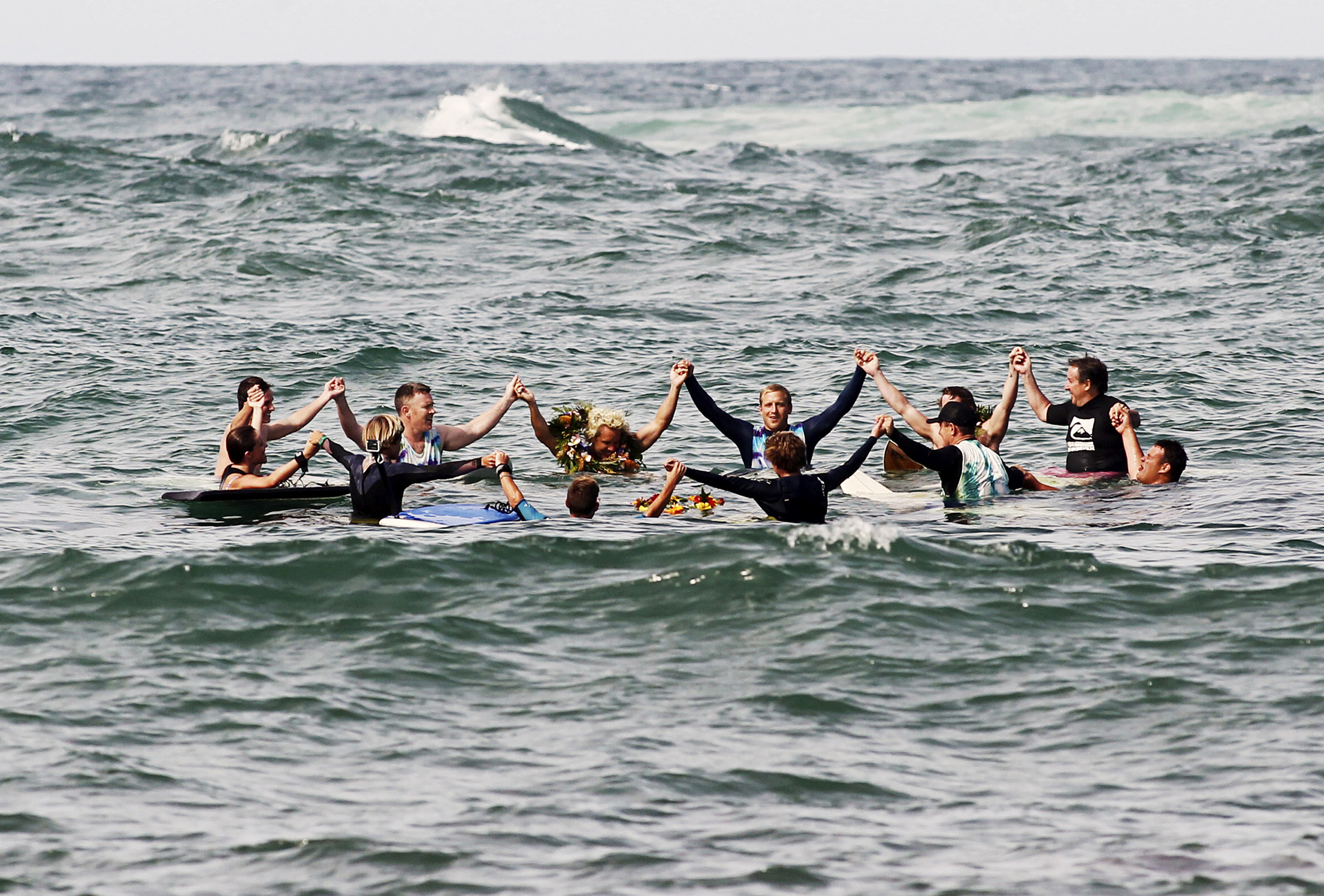
Zac’s friends took to the water to give him a surfer’s farewell.
Even so, each of the boys still surfs, determined to keep riding waves in memory of their lost mate.
“There are times when I’m out on a wave and I get scared,” says Lindsay. “It’s hard to put the thought that there might be a shark under the water out of your mind. But when that happens, I try to think of Zac and the words that he said to me when we were at The Well that fear doesn’t gain you anything.
“Zac would expect us to ride the waves. That’s what he’d be doing if one of us had died. He’d do that out of respect. And that’s what we’re going to do, live our lives without fear.”
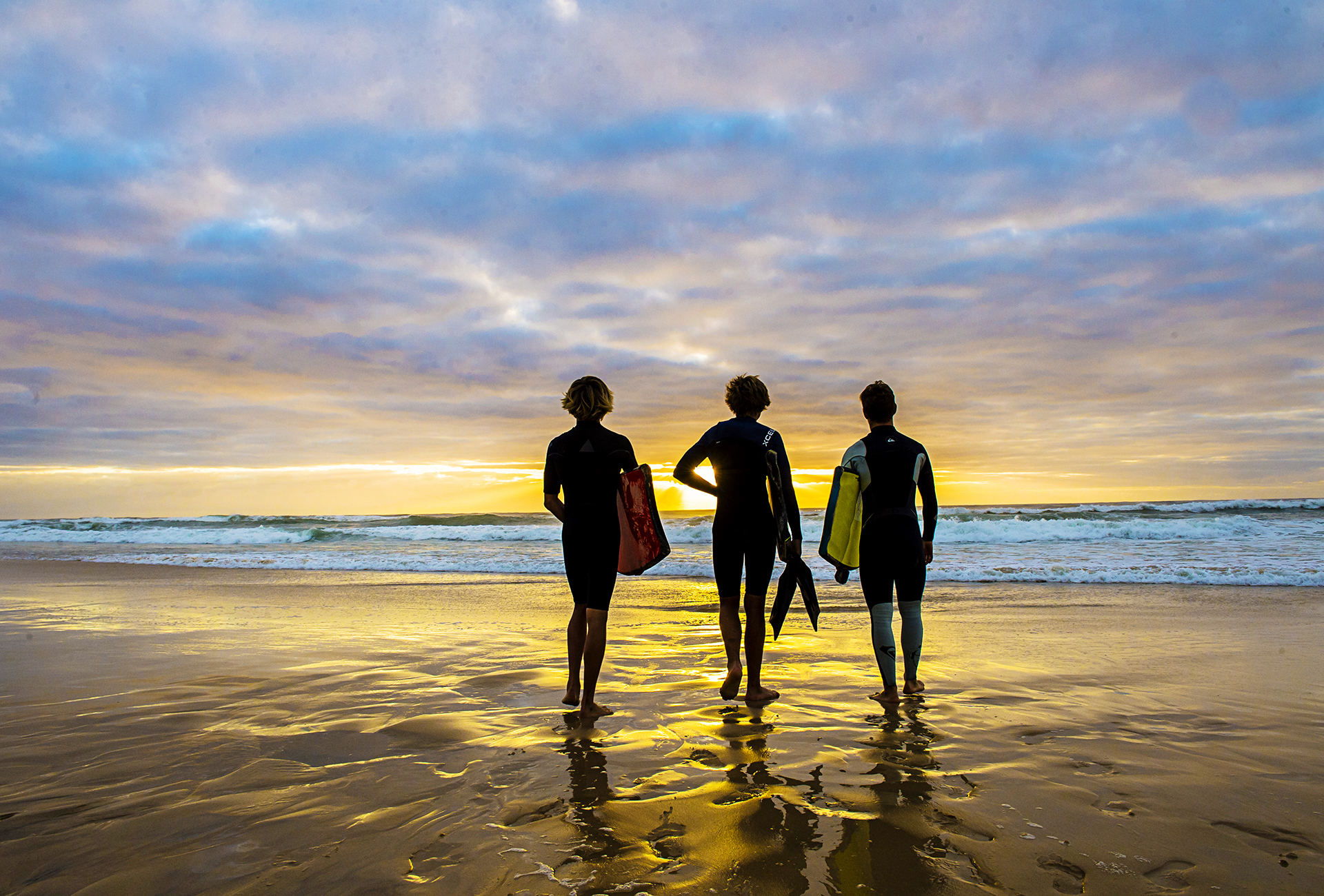
They boys say they will continue to surf, saying it’s what Zac would have wanted.
“No sense” shark cull
None of the three boys who helped drag Zac Young from the surf after his attack supports the culling of sharks.
Each says that surfers – indeed, anyone who enters the ocean – should be aware that they are in an environment that can be dangerous.
A controversial shark cull introduced in Western Australia to reduce the number of Great White Sharks has drawn widespread criticism but remains in place.
“A shark can be anywhere at any time,” says Kurt Gillan. “It’s not likely, but obviously it can happen. The truth is that there’s more chance of dying in a car accident on the way to the beach than being taken by a shark.
“As surfers we just have to be aware that we are entering the shark’s world. They aren’t entering ours. We are the ones who have to be aware and weigh the risks. Killing them for following their instincts just doesn’t seem to make sense.”
A version of this story was originally published in the March 2014 issue of The Australian Women’s Weekly.
